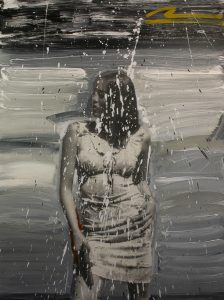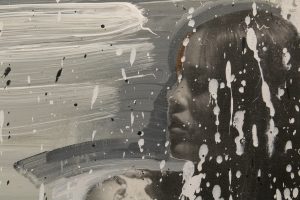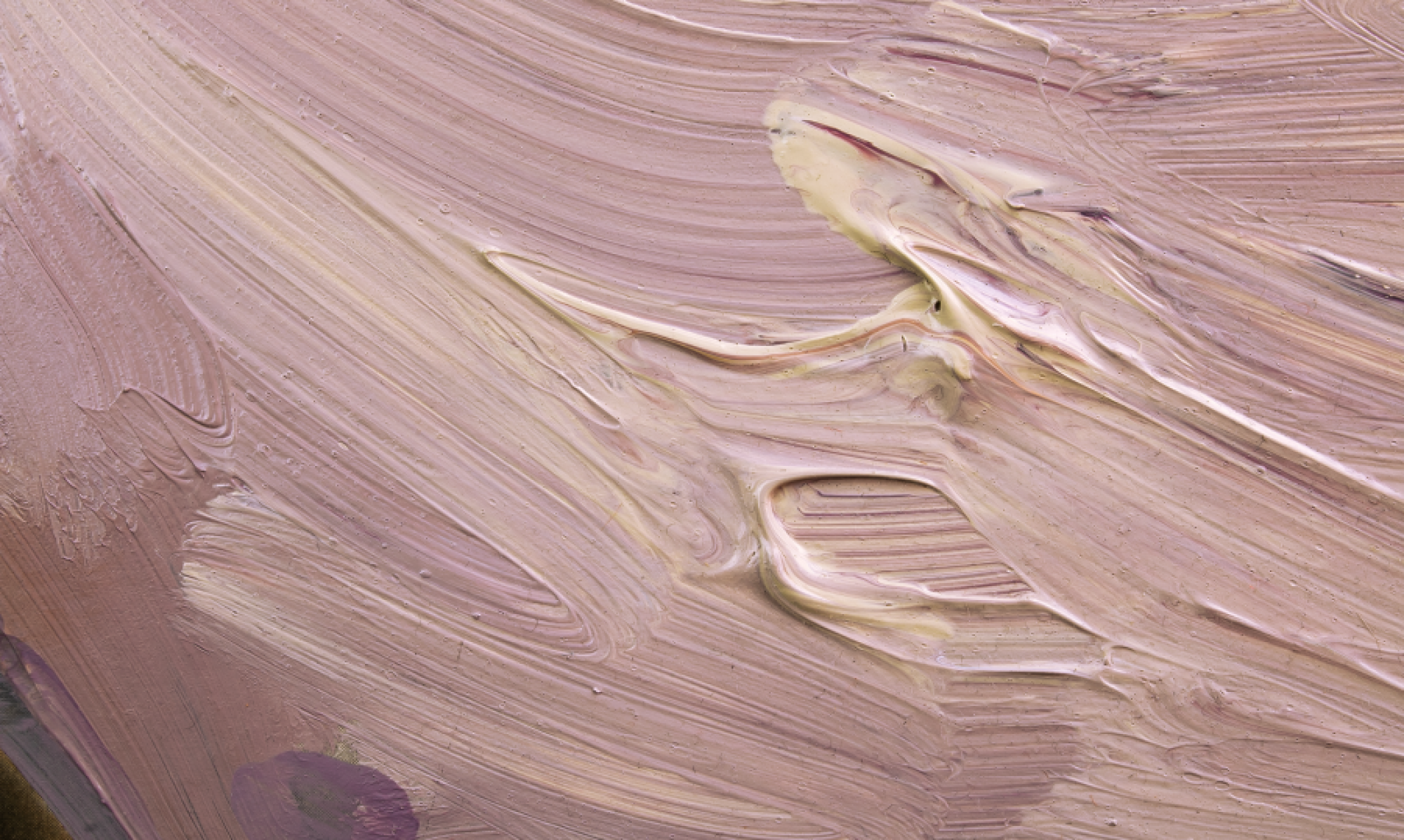We’ve been doing some photography at Kiva Gallery in order to take stock of the gallery’s collection and put together and much needed database of quality images. Going through all the work in the gallery is a great opportunity to fall in love all over again with the art. We are letting the process take its time so we can study the paintings, sculptures and textiles up close. With the help of zoom lenses one can get into details on an almost microscopic level. You discover things that’s not available to the naked eye. Mateo Romero’s paintings have proven particularly rewarding to put through this process.
Mateo Romero’s recent focus on landscape is such a logical step considering his treatment of paint. That he takes landscape as motif is one thing, but with Romero you always get two paintings in one. Beyond the subject matter there is a dimension of pure paint that demands to be experienced on its own terms. And once you enter this dimension you go through what can only be described as the bliss of pure art.
Like modernism’s star theorist Clement Greenberg, Mateo Romero knows that painting a good story does not alone a good painting make. Of course, there is plenty of narrative content in a Romero. But there is also another side to Romero, one that sets its sights on abstraction. This is the side that would appeal to Greenberg because it is here that Romero indulges in the modernist imperative to explore what constitutes painting as an art form, i.e. the paint itself, and the power it holds to be a vehicle for emotion.
One can clearly see the importance Romero imparts to paint in “Girl with a Gun”. Aside from the  figurative content, which is the expected source of suspense considering there is a gun involved, tension and drama is here conveyed primarily through paint. Unlike other paintings by Romero, there is a strict, almost dichotomous, protocol to the distribution of paint that tells it’s own wordless story. The totality of the background, or the field that surrounds the figure, is made up entirely of horizontal brushstrokes. This strict painterly scheme is however contrasted sharply by the formless spatter of paint spread across the center of the painting particularly and out toward the edges of the canvas. Control and abandonment here lives side by side and is through paint brought to bear upon the figurative content in a way that gives it added depth. The established tension tells of a threat of violent eruption that seems to belie the cool posture and demeanour of the girl holding the gun.
figurative content, which is the expected source of suspense considering there is a gun involved, tension and drama is here conveyed primarily through paint. Unlike other paintings by Romero, there is a strict, almost dichotomous, protocol to the distribution of paint that tells it’s own wordless story. The totality of the background, or the field that surrounds the figure, is made up entirely of horizontal brushstrokes. This strict painterly scheme is however contrasted sharply by the formless spatter of paint spread across the center of the painting particularly and out toward the edges of the canvas. Control and abandonment here lives side by side and is through paint brought to bear upon the figurative content in a way that gives it added depth. The established tension tells of a threat of violent eruption that seems to belie the cool posture and demeanour of the girl holding the gun.

“Girl with a Gun” is a particularly dramatic example of Romero’s treatment of paint. There are other examples where paint is allowed to be equally expressive but more joyful and captivating. These kinds of brushstrokes are especially found in Romero’s Dancer series. More on that later. The photography sessions will continue and further excursions into Romero’s wonderful world of paint will be reported here.
